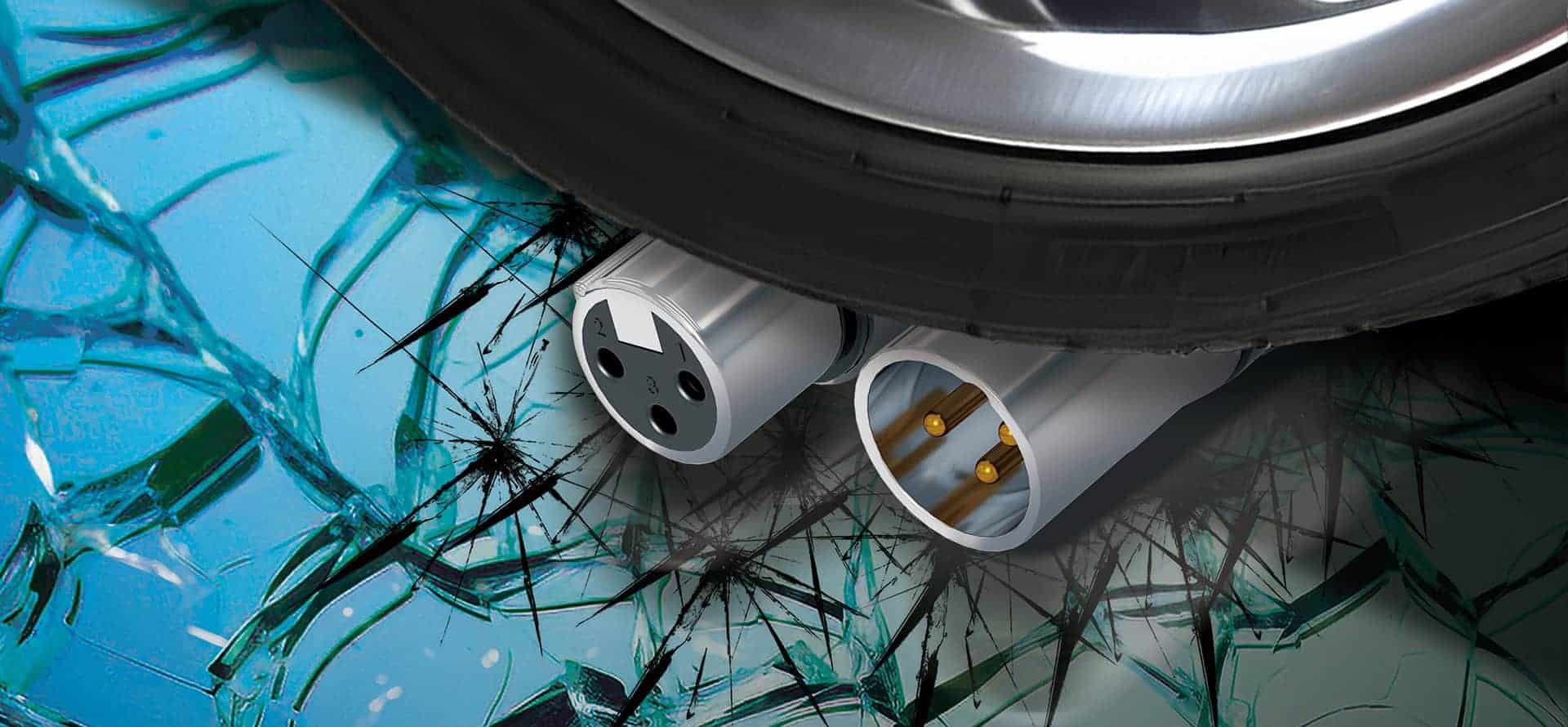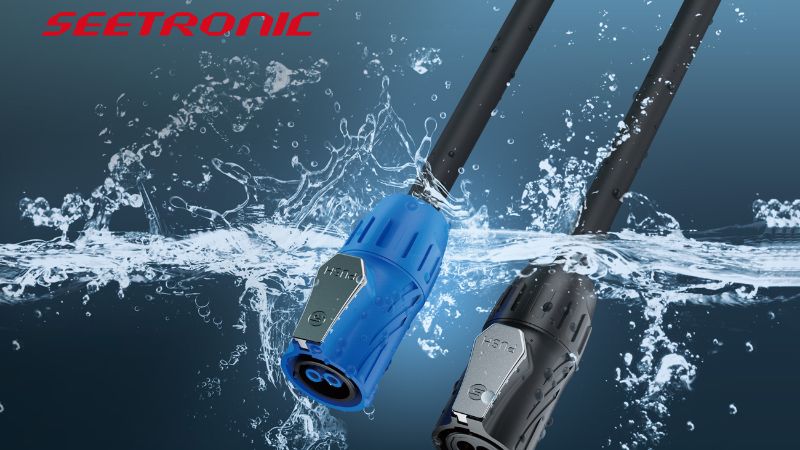This guide will walk you through different types of speaker connectors, explain where each type works best, and provide practical tips for making connections that last.
Understanding the Fundamentals
Before diving into the different types, let’s cover two basic but essential concepts: signal integrity and polarity.
Why the Right Connector Matters
A speaker connector is more than just a plug. It’s the final bridge that the electrical audio signal crosses to get from your amplifier to your speakers. A high-quality connector ensures:
- Maximum Signal Integrity: A snug, secure connection with good surface area contact minimizes signal loss, so you hear the audio exactly as it was intended.
- Durability and Reliability: Good connectors protect the speaker wire from fraying or oxidizing and prevent accidental disconnections that could interrupt your audio or even damage your equipment.
- Ease of Use: The right connector makes setting up, tearing down, or reconfiguring your system quick and painless.
The Importance of Polarity
You will notice positive (+) and negative (-) labels on both amplifiers and speakers, which are almost always color-coded red (+) and black (-). This is called polarity. It is crucial to connect the positive terminal on your amp to the positive terminal on your speaker, and the same for the negative terminals. When speakers are wired with correct polarity, their cones move in and out in unison. If one speaker is wired out of phase (polarity reversed), it will fight against the others, resulting in a thin, weak sound with a noticeable loss of bass.
Commonly Used Speaker Connector Types
Here are some of the most common speaker connectors you’ll encounter in both professional and home audio settings:
At a Glance: Speaker Connector Comparison
| Connector Type | Primary Use | Key Features |
| SpeakON | Pro Live Sound | Robust, lockable, high-current handling, comes in 2, 4, or 8-pole versions. |
| XLR | Pro Audio / Mics | 3-pin balanced connection, highly resistant to noise and interference. |
| TS (1/4-inch) | Instruments (Guitar) | Unbalanced 2-conductor (Tip-Sleeve) connection. |
| TRS (1/4-inch) | Pro Audio / Studio | Balanced 3-conductor (Tip-Ring-Sleeve) connection. |
| RCA | Home A/V | Unbalanced, typically comes in color-coded pairs (red/white) for stereo. |
| Binding Post | Amps & Speakers | Versatile; accepts bare wire, banana plugs, or spade connectors. Durable. |
| Banana Plug | Home Hi-Fi | Single-wire plug with a spring-loaded pin that inserts into binding posts. |
SpeakON Connectors
These are robust and lockable connectors designed for high-current audio applications. They are a popular choice in professional audio because they lock into place, preventing accidental disconnections. SpeakON connectors come in different varieties, including NL2 (2-pole), NL4 (4-pole), and NL8 (8-pole), which are used for single-channel, bi-amping, and large-scale audio systems, respectively.
XLR Connectors
XLR connectors are balanced audio connectors commonly found on powered speakers, microphones, and other professional audio equipment. They typically have three pins: one for the ground, one for the positive signal, and one for the negative signal. This balanced design makes them highly resistant to noise and interference, which is why they are a standard in professional audio.
TS/TRS (1/4-inch) Connectors
The 1/4-inch connector is a versatile and widely used connector in the audio world. It comes in two main versions:
- TS (Tip-Sleeve): This is an unbalanced connector, typically used for instrument cables (like guitars) and some speaker connections.
- TRS (Tip-Ring-Sleeve): This is a balanced connector, often used for connecting powered speakers, studio monitors, and headphones. The three conductors (tip, ring, and sleeve) allow for a balanced signal or a stereo signal (left, right, and ground).
RCA Connectors
RCA connectors are common in home audio and consumer electronics, such as TVs, turntables, and home theater systems. They are unbalanced connectors that typically come in pairs, with a red connector for the right channel and a white or black connector for the left channel.
Binding Posts
Binding posts are versatile connectors found on many speakers and amplifiers. They consist of a threaded post with a knurled knob that can be tightened to secure a bare speaker wire, or they can accept other connector types like banana plugs or spade connectors. Their durability and ability to provide a high-quality connection make them a popular choice.
Banana Plugs
Banana plugs are single-wire connectors that are designed for easy insertion into binding posts. They feature a spring-loaded pin that creates a snug and secure connection, ensuring excellent signal quality and reducing the risk of accidental disconnection.
Less Common and Specialized Speaker Connector Types
While the connectors listed above are the most common, you may also come across these specialized types:
Euroblock (Phoenix) Connectors
These are modular, removable screw-down terminal blocks that are widely used in commercial audio installations. They are durable and easy to use, and they can accommodate various wire gauges.
Screw-on Barrier Strips
Similar to Euroblock connectors, these are used in commercial applications to provide secure and organized connections for multiple wires.
Spade Connectors
These connectors have a forked, spade-like shape and are designed to be used with binding posts. They are a good choice when you need to connect speakers that are close to a wall, as they don’t stick out as far as banana plugs.
Pin Connectors
These are a smaller version of banana plugs and are less common in modern audio equipment. They are not as secure as banana plugs because they lack the spring-loaded design.
Connectors for Car Audio Systems
Car audio systems have their own unique set of connectors, designed to handle the specific challenges of a mobile environment. In addition to RCA connectors, you may find:
- DIN Connectors: These are often found in older European cars.
- Bullet, Ring, RF, MCX, and MMCX connectors: These are various other types of connectors that you might encounter in a car audio system, each with its own specific application.
Choosing the Right Speaker Connector
With so many options available, how do you choose the right connector for your needs? Here’s a quick guide to help you decide:
For Home Theater:
Binding posts with banana plugs are an excellent choice for a clean and secure connection. RCA connectors are also common for connecting various components in a home theater system.
For Musicians:
- Live Sound: SpeakON connectors are the industry standard for connecting PA speakers and subwoofers. XLR connectors are used for microphones and for connecting mixers to powered speakers.
- Studio: XLR and TRS connectors are commonly used for connecting studio monitors and other professional audio equipment.
For Professional Audio:
SpeakON and XLR connectors are the go-to choices for their durability, reliability, and secure connections.
Best Practices for Flawless Connections
- Don’t Skimp on Quality: A high-quality connector from a reputable brand will have better conductivity and be more durable than a cheap, generic alternative.
- Maintain Correct Polarity: Always double-check your connections: red (+) to red (+), and black (-) to black (-).
- Keep Them Clean: Dust and oxidation are the enemies of a good connection. Occasionally unplug your connectors and wipe them with a dry, lint-free cloth.
- Avoid Using Instrument Cables for Speakers: Never use a shielded guitar/instrument cable to connect an amplifier to a passive speaker. Speaker cables are unshielded and have much thicker wires to handle the high power from the amp. Using an instrument cable can be a fire hazard and can damage your amplifier.
How to Choose and Install the Right Connector
Here are the key factors to consider:
- Power: Make sure the connector and cable can handle the power output of your amplifier. For high-power systems, Speakon is the best choice.
- Cable Gauge: For cable runs over 20 feet, use a thicker cable (lower AWG number) to ensure good power delivery and bass response. These thicker cables pair well with larger connectors like Speakon.
- Environment: For outdoor or permanent installations, choose corrosion-resistant materials. For stage use, locking connectors are a priority.
Conclusion
For high-performance, durable options, consider Seetronic, a leader in innovative connectivity solutions. We offer a wide range of loudspeaker connectors and other data connectors ideal for any audio setup.
No matter the application, always prioritize secure connections and proper wiring techniques. A little extra care upfront will save you time, money, and a lot of headaches later on.
Explore Seetronic’s product offerings to find the perfect solution for your audio needs.
Frequently Asked Questions (FAQs)
What’s the difference between a speaker cable and an instrument cable?
While they may look similar, speaker cables and instrument cables are constructed differently. Speaker cables are designed to handle higher power levels, while instrument cables are designed to carry low-voltage signals and are shielded to prevent interference. Using the wrong cable can damage your equipment and result in poor sound quality.
Are banana plugs better than bare wire?
Banana plugs offer a more secure and reliable connection than bare wire, and they also protect the wire from fraying and corrosion. They are generally considered a better option for a long-lasting, high-quality connection.
Which is better, XLR or 1/4-inch TRS?
Both XLR and 1/4-inch TRS connectors can provide a high-quality, balanced connection. The choice between the two often comes down to the equipment you are using. XLR connectors are generally more robust and have a locking mechanism, making them a better choice for live sound applications where cables might get pulled or kicked.
Are Speakon and banana plugs interchangeable?
No, they are not compatible. Speakon is a locking pro-audio connector, while banana plugs are designed to fit into binding posts. If you need to connect between them, use a pre-made adapter cable or re-terminate one end of your cable with the correct connector.

